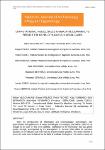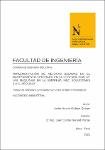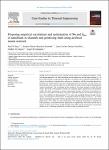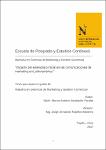Mostrar el registro sencillo del ítem
Computational model, based on machine learning, to predict the level of success in legal cases
| dc.contributor.author | Auccahuasi, Wilver | |
| dc.contributor.author | Peláez, Brayan | |
| dc.contributor.author | Flores, Pedro | |
| dc.contributor.author | Rurbano, Kitty | |
| dc.contributor.author | Bernardo, Grisi | |
| dc.contributor.author | Bernardo, Madelaine | |
| dc.contributor.author | Sernaque, Fernando | |
| dc.contributor.author | Benites, Nicanor | |
| dc.date.accessioned | 2021-06-03T15:14:25Z | |
| dc.date.available | 2021-06-03T15:14:25Z | |
| dc.date.issued | 2020-11-30 | |
| dc.identifier.citation | Auccahuasi, W. ...[et al]. (2020). Computational model, based on machine learning, to predict the level of success in legal cases. PalArch’s Journal of Archaeology of Egypt / Egyptology, 17(6), 1775-1781. https://archives.palarch.nl/index.php/jae/article/view/1061 | es_PE |
| dc.identifier.issn | 1567-214X | |
| dc.identifier.uri | https://hdl.handle.net/11537/26692 | |
| dc.description.abstract | ABSTRACT With the development of information and communication technologies, new opportunities and applications of many technologies are emerging that before could not be thought to be used, in this sense artificial intelligence is the technology that has gained greater strength, accompanied by the development of hardware that makes its execution possible and of software tools that make its implementation possible. The neural network is one of the most used techniques in the field of artificial intelligence. This work is based on analyzing possible cases of labor judicial problems, when workers who have suffered an abuse by employers are faced with. The success of the case according to the model presented, is based on being able to have the majority of documentation that evidences both the employment relationship, responsibilities of the employees, documents that support the payment of remuneration, documents that evidence any fault committed by the employee between others, a computational model was developed with a graphical user interface to make its application more practical. The model presents an effectiveness level of 93%, analyzed with 400 cases between positive and negative. For the training process, 100 cases corresponding to positive cases and 100 cases corresponding to negative cases were used. The model is practical in its use and can be scalable to different areas in the legal field. | es_PE |
| dc.format | application/pdf | es_PE |
| dc.language.iso | eng | es_PE |
| dc.publisher | PalArch Foundation | es_PE |
| dc.rights | info:eu-repo/semantics/openAccess | es_PE |
| dc.rights | Atribución-NoComercial-CompartirIgual 3.0 Estados Unidos de América | * |
| dc.rights.uri | https://creativecommons.org/licenses/by-nc-sa/3.0/us/ | * |
| dc.source | Universidad Privada del Norte | es_PE |
| dc.source | Repositorio Institucional - UPN | es_PE |
| dc.subject | Simulación por computadora | es_PE |
| dc.subject | Inteligencia artificial | es_PE |
| dc.subject | Problemas laborales | es_PE |
| dc.subject | Trabajo | es_PE |
| dc.title | Computational model, based on machine learning, to predict the level of success in legal cases | es_PE |
| dc.type | info:eu-repo/semantics/article | es_PE |
| dc.publisher.country | NL | es_PE |
| dc.identifier.journal | PalArch’s Journal of Archaeology of Egypt / Egyptology | es_PE |
| dc.subject.ocde | https://purl.org/pe-repo/ocde/ford#2.02.04 | es_PE |







